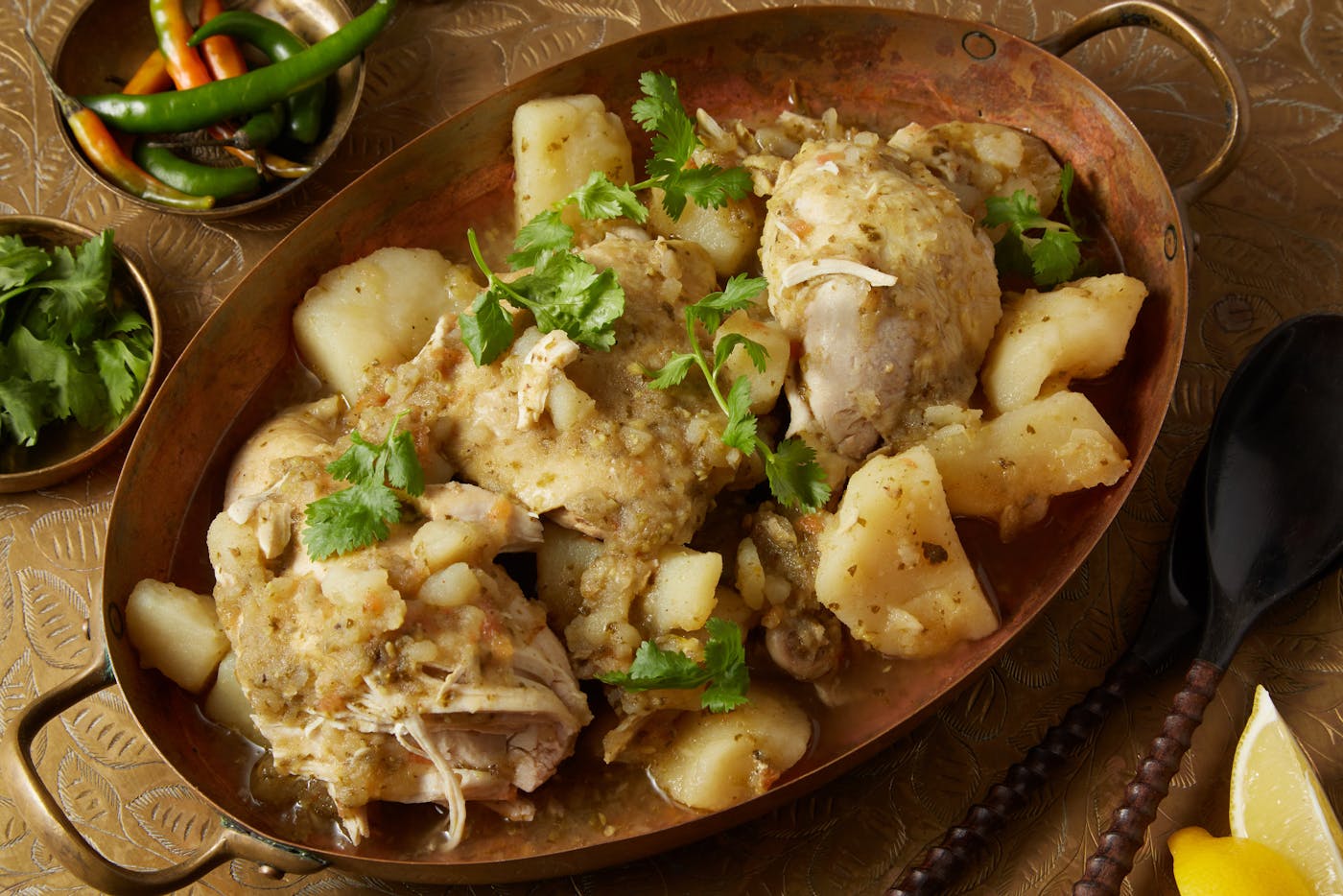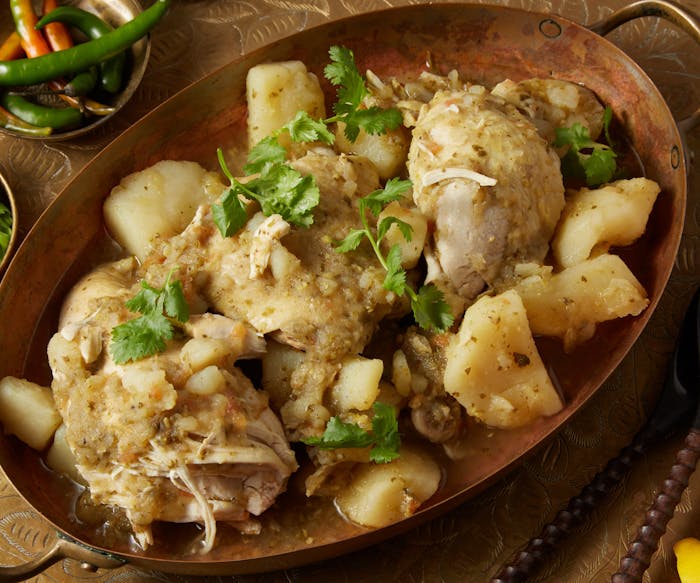Shabbat dinners in Shulie Madnick’s childhood home in the Israeli coastal city of Ashdod varied only slightly from week to week. There was always challah and Israeli salads, often onion bajji or fritters and puri, a spherical fried bread from India, and rice. The accompaniments, however, were secondary to a centerpiece of chicken curry, made with her family’s custom heady spice blend.
A chicken (or sometimes beef) curry features on the table of many Jewish families, like hers, with roots in Mumbai, a community called Bene Israel, Shulie explains. “There will be certain variations because of the hand [making it] or the spice mixture, but they will be very distinctly similar in flavor.” When we asked her who was the first person in her family to make chicken curry for Shabbat, she explained that it has been made for “thousands of years, so I can not trace it.”
It was her grandmother, though, who brought the recipe to Israel when she immigrated in the early 1960s. The Jewish community in India didn’t face persecution, Shulie explains. But, “I think my grandmother wanted a different life…. [she] wanted to change the narrative of her own life. She was the driving force behind the move. She was an empowered, strong woman. ” So, when Jewish Agency officials came to encourage aliyah, the family signed up. While their lives shifted, the family’s cooking remained deeply rooted in the Indian kitchen.
Shulie was raised on Shabbat curry, along with puri, bajji, and chapati, a flatbread her family gathered in the kitchen to make together in an assembly line. “My mom would make fresh food everyday. There were no leftovers,” Shulie explains. “I think the cooking made life richer for us — even though growing up we were not rich,” she adds.
On Fridays, Shulie would tag along with her mom when she went to the city’s shuk, or market, to buy chicken and a batch of freshly-ground masala for the Shabbat curry. That required a trip to a spice shop owned by her aunt and uncle. The two carefully blended precise proportions of dried red chiles, cinnamon, star anise, cloves, cardamom, cumin, and coriander seeds to make their signature masala. Decades later, the ratios remain a closely guarded family secret.
Despite her mother’s daily cooking and trips to the shuk, Shulie had no interest in cooking as a child. “When I got married, when I was 21, I barely knew how to boil eggs,” she says.
Only when she moved to Washington D.C. a few years later, did she start to cook, calling her mother for the family recipes, including the Shabbat curry. As she started to spend more time in the kitchen, Shulie, who is now a professional food writer and photographer, realized that “somehow, along the way, it became a part of me,” she says. It wasn’t just the recipes that she had absorbed as a child. During the afternoons she spent in the kitchen, helping as part of the family assembly line, “I was getting the feel and the rhythm.”
Today, she’s working to imbue her son Sagie, who lives in Israel, with her mother’s kitchen rhythm and the family’s recipes. The two cook together when Shulie visits him in Israel, whether it’s in an AirBnB kitchen or on a Kibbutz where he spent his weekends when he served in the army. The rest of the time, the cooking sessions take place over video calls that connect their two kitchens.
So far, Sagie hasn’t learned to make the Shabbat curry, but when he does, it will certainly be with the family blend.


